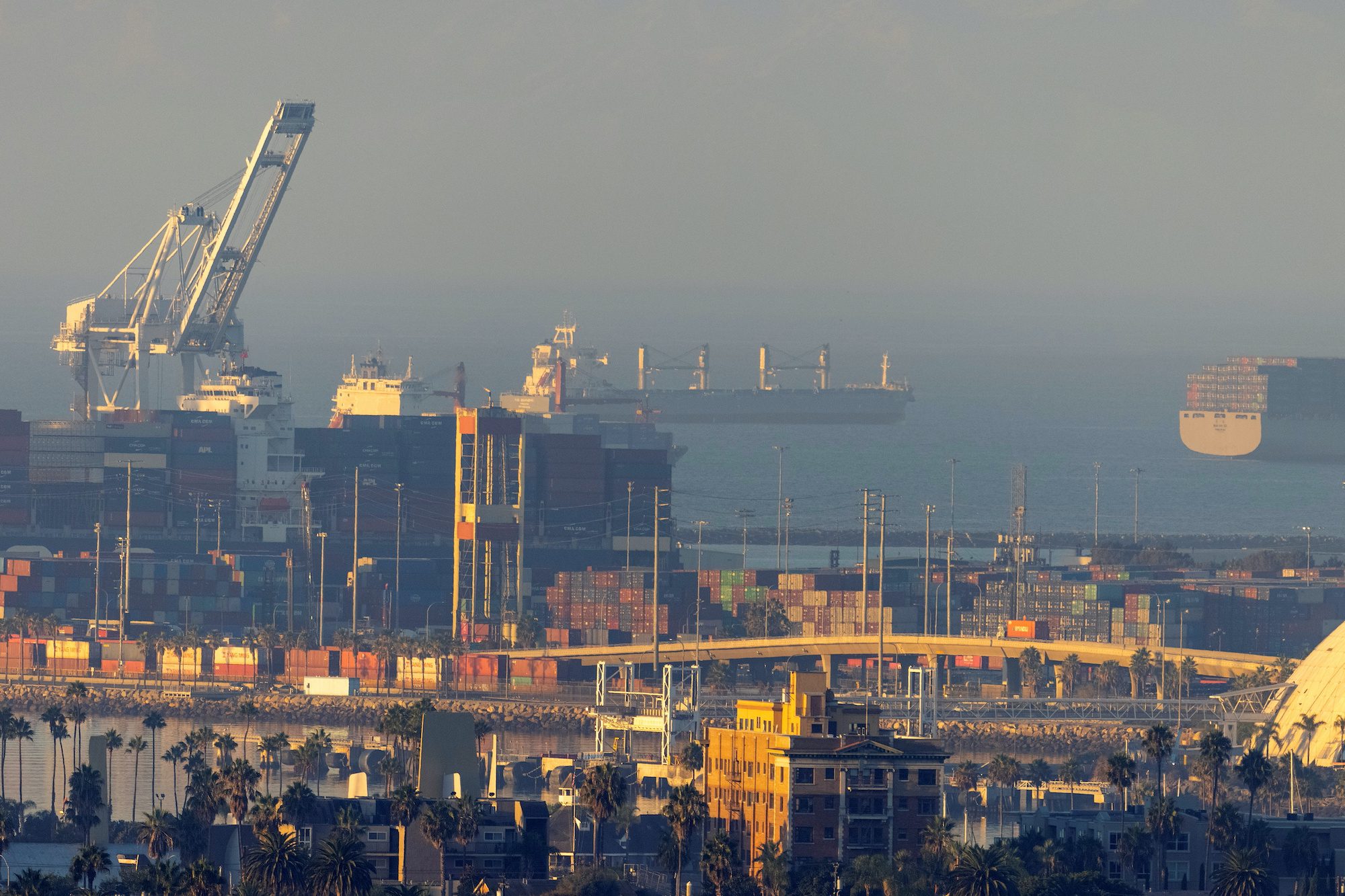The Port of Long Beach reported its second busiest October ever last month as it works to clear the backlog of containers that has limited capacity at terminals and hampered the flow of imports, the port said Thursday.
Volumes were still strong enough to mark the port’s second-busiest October on record behind October 2020. Dockworkers and terminal operators last month moved 789,716 TEUs, down 2.1% from last year.
Imports in October were down 4.3% to 385,000 TEUs, while exports rose 6.6% to 122,214 TEUs. Empty containers moving through the port, which have contributed greatly to backlogs and highlight the significant trade imbalance, declined 2.4% to 282,502 TEUs.
“Every sector of the supply chain has reached capacity and it is time for all of us to step up and get these goods delivered,” said Port of Long Beach Executive Director Mario Cordero. “In Long Beach, we are trying to add capacity by searching for vacant land to store containers, expanding the hours of operation at terminals, and implementing a fee that will incentivize ocean carriers to pull their containers out of the Port as soon as possible.”
The fee referenced by Cordero is the extended “dwell fee” that both the ports of Long Beach and Los Angeles are implementing to incentivize the flow of cargo containers moving through the two San Pedro Bay ports. The new policy imposes a daily fee against ocean carriers for dwelling import containers at marine terminals starting at $100 per day and increasing by $100 increments for each day past the allowable dwell time (9 days or more for truck cargoes and six or more for rail). Ocean carriers have until November 15 to clear imported containers, which have already been offloaded from their ships, before the fees implemented.
As of November 10, the Port of Long Beach reported a 20% decrease in loaded import containers that have dwelled at the port’s terminals past their respective time limits. Figures released by the port, however, show there are still over 21,000 import containers that currently face charges of at least $100, if not exponentially more considering the numbers released by the port only show total number of containers past the allowable dwell time limit, but not the amount of time past. At the current level, ocean carriers would face a minimum charge totaling $2.1 million (based on 21K containers at $100 each, the minimum charge), costs that will ultimately get passed to the shipper and, in turn, the consumer.
Next door at the Port of Los Angeles, data released by the port shows over 30,000 import containers “dwelling” for 9 days or more, each of which faces a minimum $100 fee. Among those are over 24,000 containers that have dwelled 13 days or more, amounting to a minimum $1500 fee each, or $36,000,000 (assuming all are truck loads that have dwelled 5 or more days past the allowable 8 days).
As has been reported for weeks now, the Port of Long Beach is also continuing to work with marine terminals and supply chain partners to expand hours as part of a framework for 24-7 operations.
“We are working around the clock at the Port,” said Long Beach Harbor Commission President Steven Neal. “We’re doing everything we can with help from the supply chain to get goods off the ships and onto store shelves in time for the holidays.”
Despite the negative year-over-year growth in October, year-to-date volumes through the Port of Long Beach are up considerably. Through the first 10 months of the year, the port has reported handling 7,884,565 TEUs, up 21% from the same period in 2020. At the current pace, the Port of Long Beach is on track to move more than 9 million TEUs by the end of this year, surpassing the current record of 8.1 million TEUs achieved in 2020.
“Consumer spending slightly lagged in early fall, but remains above pre-pandemic levels. Employment is rebounding more quickly than the periods following the dot-com bust and the Great Recession, with full jobs recovery anticipated by mid-2022,” the port said in its monthly update.
The Marine Exchange of Southern California, which manages vessel traffic services for the San Pedro Bay port area, shows that the number of containerships in port at the ports of Los Angeles and Long Beach reached a record 108 ships in October, including a record 77 either at anchor or loitering in holding areas.
The Port of Los Angeles has not yet reported October figures.
Sign up for our newsletter

 Join The Club
Join The Club











